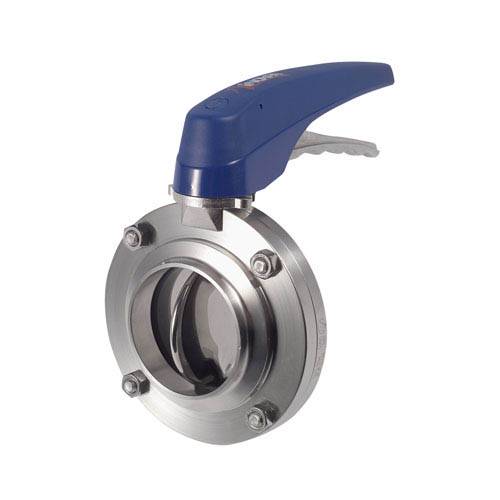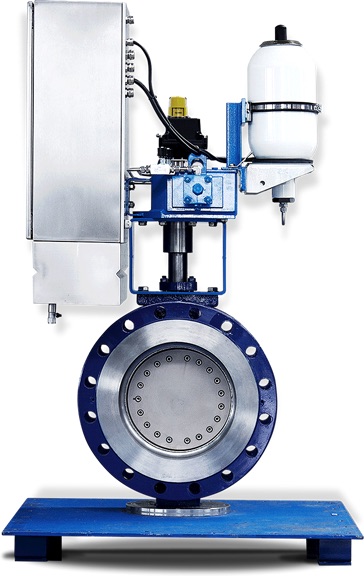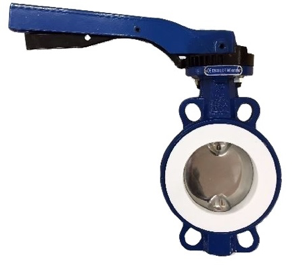
Gate valve vs. butterfly valve: what’s the difference?
Whether you are an engineer, a project manager, or someone who simply wants to better understand industrial components, you have likely heard of a gate valve and a butterfly valve and wondered ‘What’s the difference between a gate valve and a butterfly valve?’. These two types of valves, common in many industries, are similar in their core function; controlling fluid flow. Yet they differ in several key aspects. Knowing which one suits your specific application can save you time, resources, and even potential headaches down the line. Let’s find out the difference between a gate valve and a butterfly valve once and for all and discover how they operate and where they fit best in commercial and industrial settings.
Getting To Know The Gate Valve
Gate valves are a reliable component that has many industrial uses. What makes them different from a butterfly valve is their gated design, which includes a body, bonnet, stem, handwheel, and a gate-like disk. These components are usually made from durable materials like cast iron, stainless steel, or brass. These valves have to be built to last and must withstand varying pressures and repeated operations.
Rotating the handwheel raises or lowers the disk within the body of the valve, creating an opening for fluids to flow through or blocking their path. It takes multiple turns to fully open or close the valve. The benefit of this is that it adjusts the flow slowly, avoiding potential water-hammer. It should be noted that gate valves are only intended for use in the fully open or fully closed position.
Introducing The Butterfly Valve
If speed and simplicity are what you are after, then a butterfly valve might be what you are looking for. Unlike the gate valve, the butterfly valve has a simpler design, featuring just a disc mounted on a rotating stem. The materials they can be made from are just as varied, like stainless steel, cast iron, or even certain types of plastic. They give you durability while keeping the overall weight and cost low.
Butterfly valves move quickly, which is their primary advantage over gate valves. From just a 90-degree turn of the handle or actuator, you fully open or close the valve, offering quick control over fluid flow. This kind of speed can be particularly useful when frequent adjustments are needed, or you need to stop and start flow rapidly. While it may lack the refined control of a gate valve, the butterfly valve is perfect for situations where fast action is more crucial than precise flow regulation.
Butterfly vs Gate Valve
If you’re still weighing your options between gate and butterfly valves, knowing their key differences can tilt the scales in favour of your project’s needs. One striking difference is the level of complexity and weight. Gate valves, with a larger structure, can be bulky and intricate. Butterfly valves have a simple design that is lighter, making them easier to handle and install. If space is tight in your working environment, a butterfly valve might be your better option.
Flow control is another area where these two diverge. While a gate valve gives you the luxury of fine-tuned control over fluid flow, thanks to its multiple-turn operation, a butterfly valve is all about speed. With a quick 90-degree turn, you can fully open or close it, which is convenient but offers less control. Your choice would then depend on whether you prioritise precise regulation or quick action.
When it comes to cost, butterfly valves often come out ahead due to their simpler construction. If budget constraints are a concern in your project, this might be an important factor. If you are considering how each valve affects fluid pressure, gate valves typically have a lower pressure drop when fully open, compared to butterfly valves. This feature could be important if maintaining a consistent flow rate is crucial for your operations.
Making Your Choice
Both types of valves have their merits and downsides, so your choice will hinge on the specific demands of your project. If you are dealing with applications that require meticulous flow control, a gate valve would be more suitable. If quick action and less space are your primary concerns, a butterfly valve is likely a better fit. While gate valves are often the go-to for complex, long-term industrial projects, butterfly valves find their place in environments where speed and space efficiency are prioritised. Now you know the difference between a gate valve and a butterfly valve, you will be able to make the right choice for your business.



